In this next report from my recent stay onboard the Queen Mary, I take you on a virtual visit to one area of the ship that has been preserved and is part of a self-guided tour – the ship’s Isolation Ward. The name itself sends a chill through your body as you wonder what “really” went on in there.
The Isolation Ward on the Queen Mary was just as the name implies, an isolated spot where those who contracted communicable diseases while at sea were sent to in order to be isolated from fellow passengers and crew. The Queen Mary’s isolation wards consisted of a male and female ward, each with five beds, a full bath, and an attached cabin for two nurses.
According to placards in the area, records do not indicate if the wards were ever used for their intended purpose, but were often used to house stowaways.
While the Queen Mary was docked in Long Beach since 1968, the ward was not part of the tour until 1999 when the area was recreated and restored. Prior to that, the area was gutted and used for storage.
You access the Isolation Ward by taking a set of steep, old (very worn) steps down from the ship’s deck:

Once inside, the restored female ward is visible behind glass. Sterile white walls, very uncomfortable looking bunk beds, a green linoleum floor, and two sinks are all that make up these “accommodations.”

A picture on the wall, as part of the exhibit, shows the original layout of the ward and how it accurately matches what is represented today.

Off to the side is the female nurses’ cabin, also furnished in sterile utilitarian style one would expect from such a place.
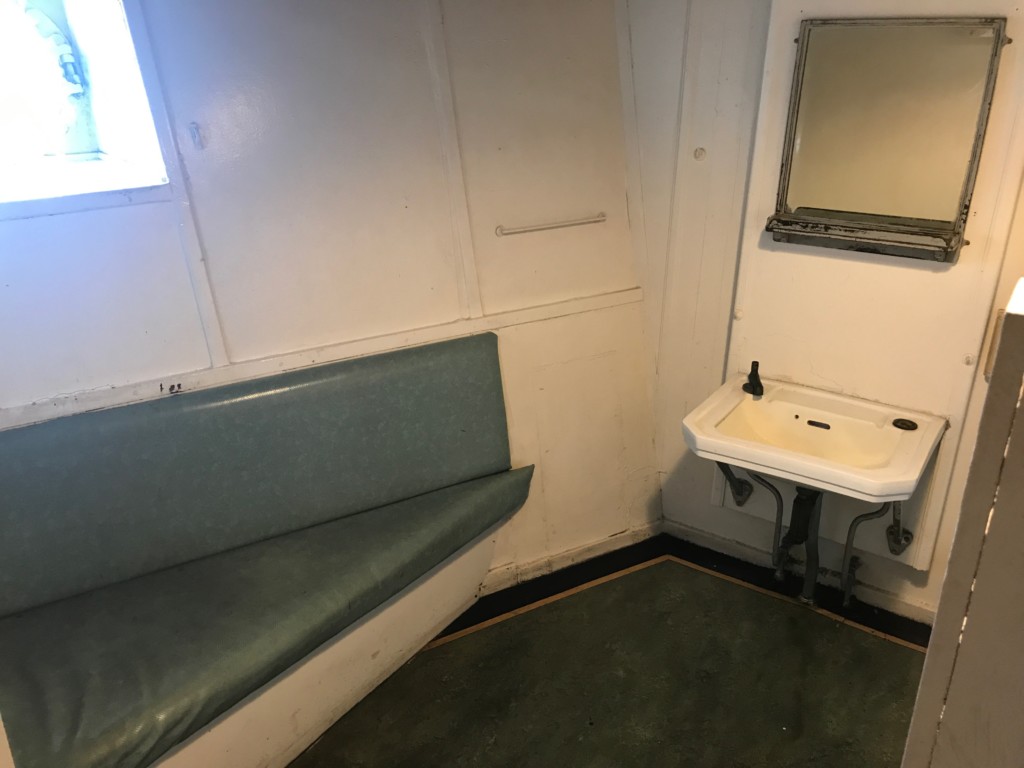
In addition to the isolation ward, the ship also consisted of a hospital and surgery, doctor’s offices, and a dispensary. The photo below shows the layout of the ship’s medical facilities and the isolation ward as originally constructed.
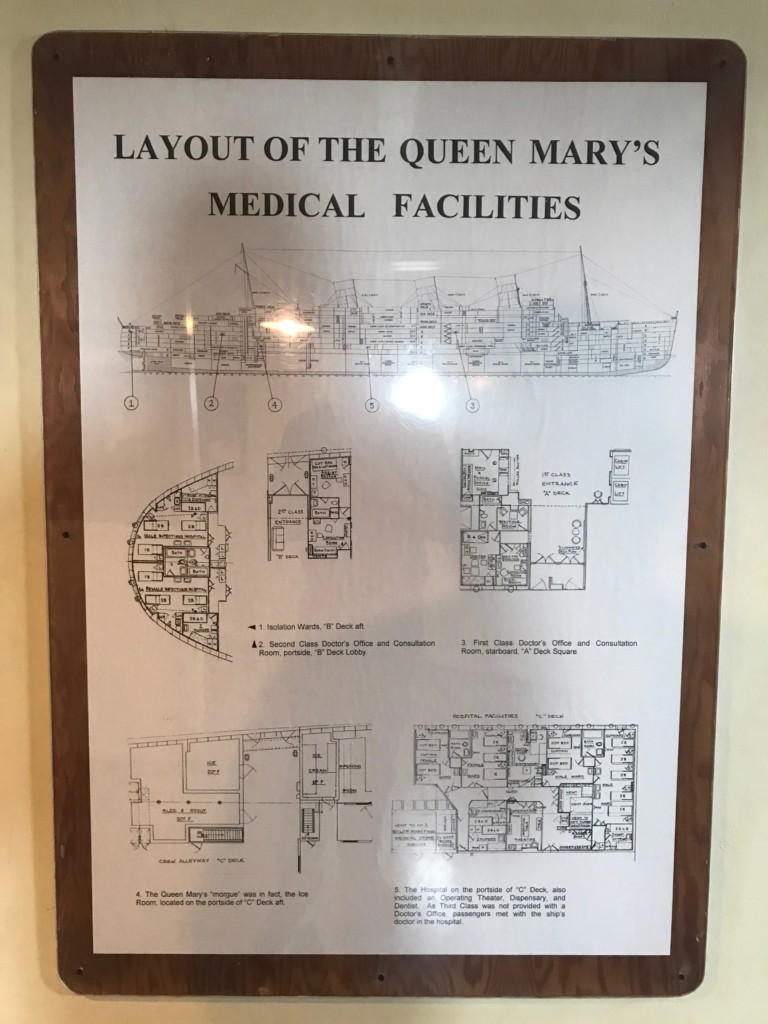
Another area of the exhibit, which just so happened to be the men’s isolation ward, now houses artifacts and details of the ship’s medical facilities. A stretcher is displayed with a plaque which talked about how the Queen Mary performed rescues at sea.
“On a number of occasions, the Queen Mary’s medical staff were called upon to render medical assistance and advice at sea. Ships without medical staff or facilities of their own (such as cargo and fishing vessels), would have need to radio for medical assistance in the event of sickness or accident.
In many instances, the information could be handled over the radio, with information and advice being transmitted between the requesting vessel and the Queen Mary. However, if the situation was serious enough, it might be necessary for the Queen Mary’s staff to go aboard the distressed vessel.
If the requesting ship did not have adequate facilities to care for the sick or wounded, or if surgery was required, the patient would be transferred to the Queen Mary’s hospital.
The patient would be wrapped for warmth, secured to a stretcher and then be lowered into a waiting lifeboat. Often, a safe and swift transfer would be made more difficult by unfavorable weather condition and choppy seas common on the North Atlantic.
Records in the Queen Mary’s archive indicate that medical advice was frequently and successfully rendered, and in many cases were of a heroic nature.”
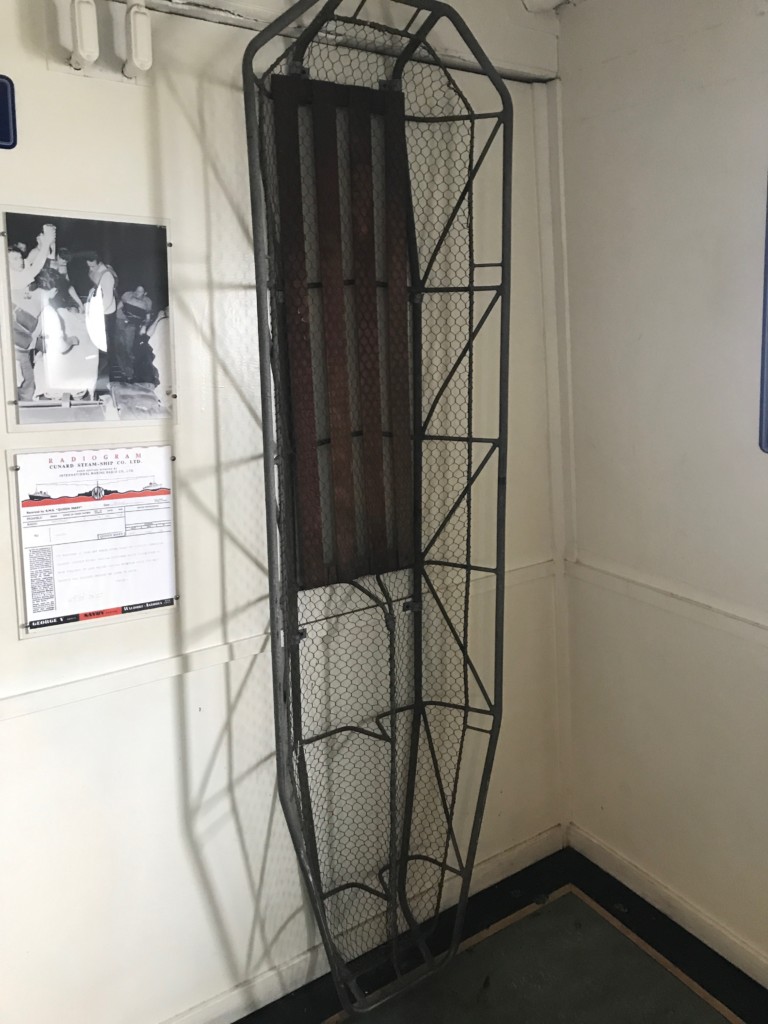
Death on ships is a fact of life. In the case of the Queen Mary, the ship did not have a morgue like modern vessels have but instead carried a supply of caskets for men, women, and children in the #1 cargo hold.
In the event of a death at sea, if the cause of death was able to be identified without an autopsy, the doctor would fill out the necessary paperwork and embalm the body at sea. If he/she could not determine the cause of death, the body would be held and placed in cold storage until the ship docked.
If a crew member died at sea, it was customary at the time that he/she simply be buried at sea. A plaque in the exhibit describes the process:
“When a sailor died at sea, it was customary to sew him up in his own hammock. The last stitch to be made always went through the dead man’s nose, supposedly to ensure he was actually dead.
In more recent times, the body was still stitched up in canvas, but no longer was a hammock used. Nor was the custom of placing the last stitch through the nose observed. Records from the Queen Mary’s archive indicate that three yards of canvas would typically be required.”
A list of passengers and crew who died onboard the Queen Mary are displayed in the exhibit as well.
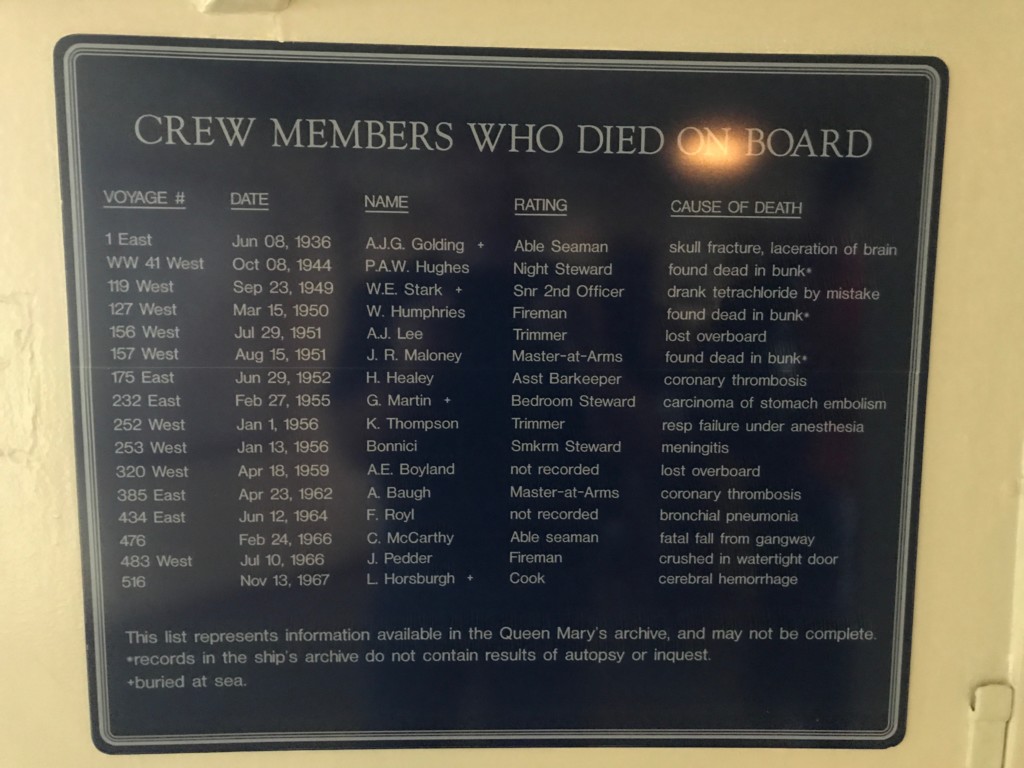
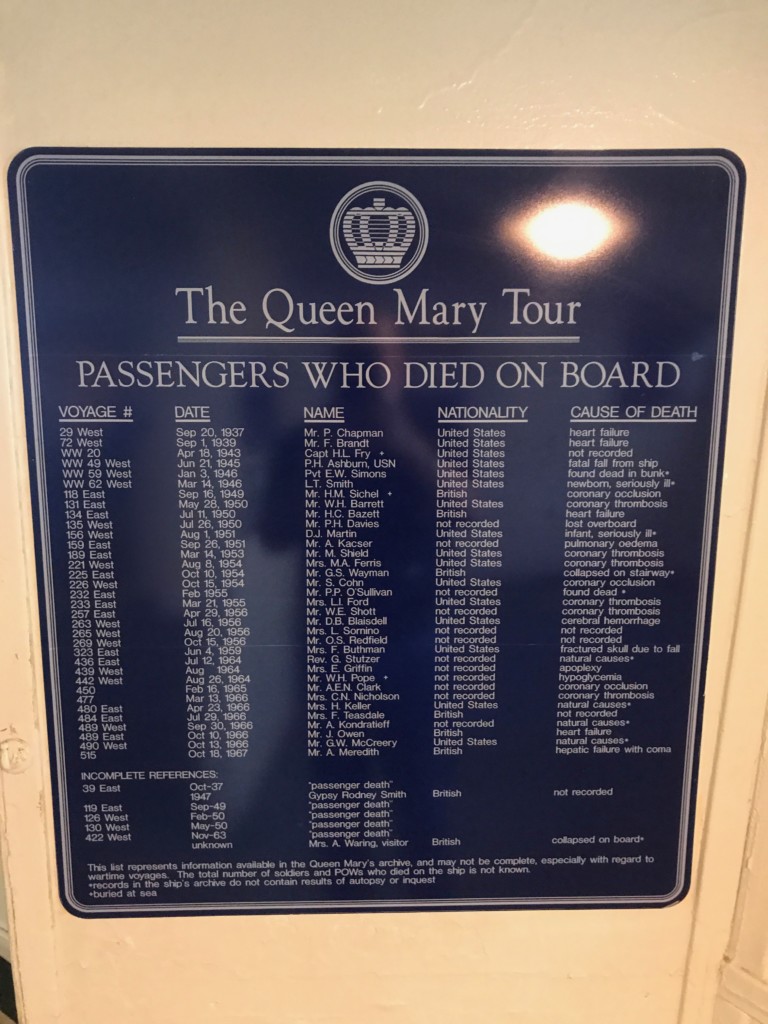
Finally, before leaving the Isolation Ward, there’s an area you can visit that housed the ship’s Capstan Room. This area shows the ship’s restored capstan machinery and rope storage.
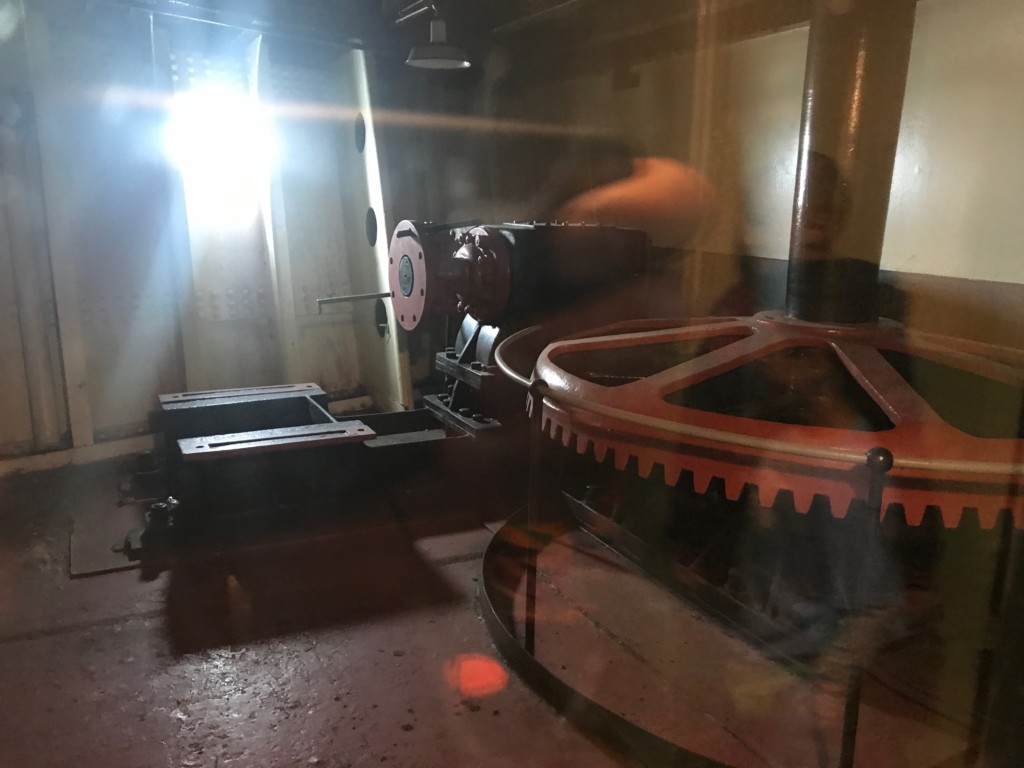

As you exit this area, you can’t help but take note of a stairway that has long seen its day as well as the ceiling and portholes that are a pretty good indication of how time has taken its toll on the Queen Mary.
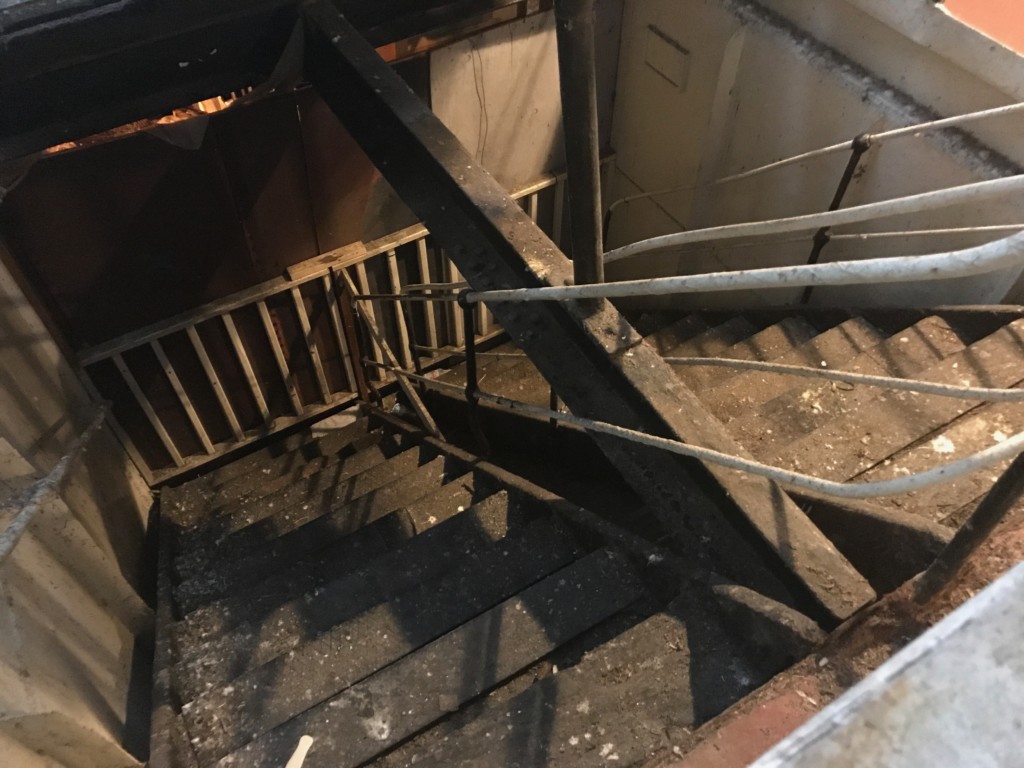
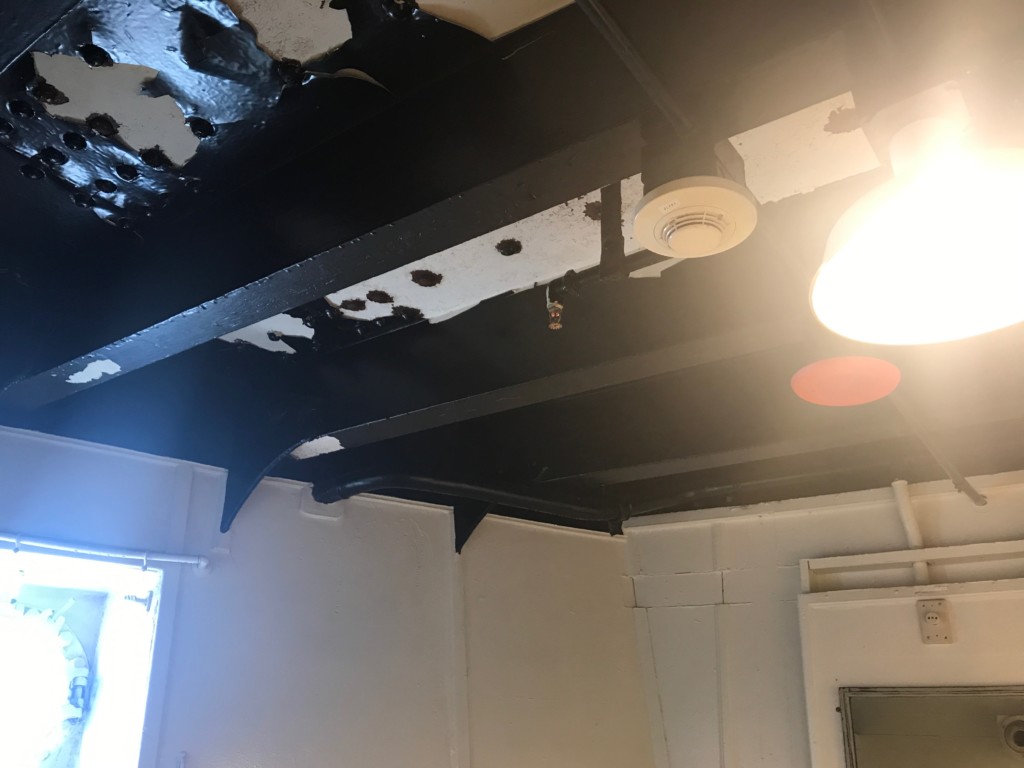
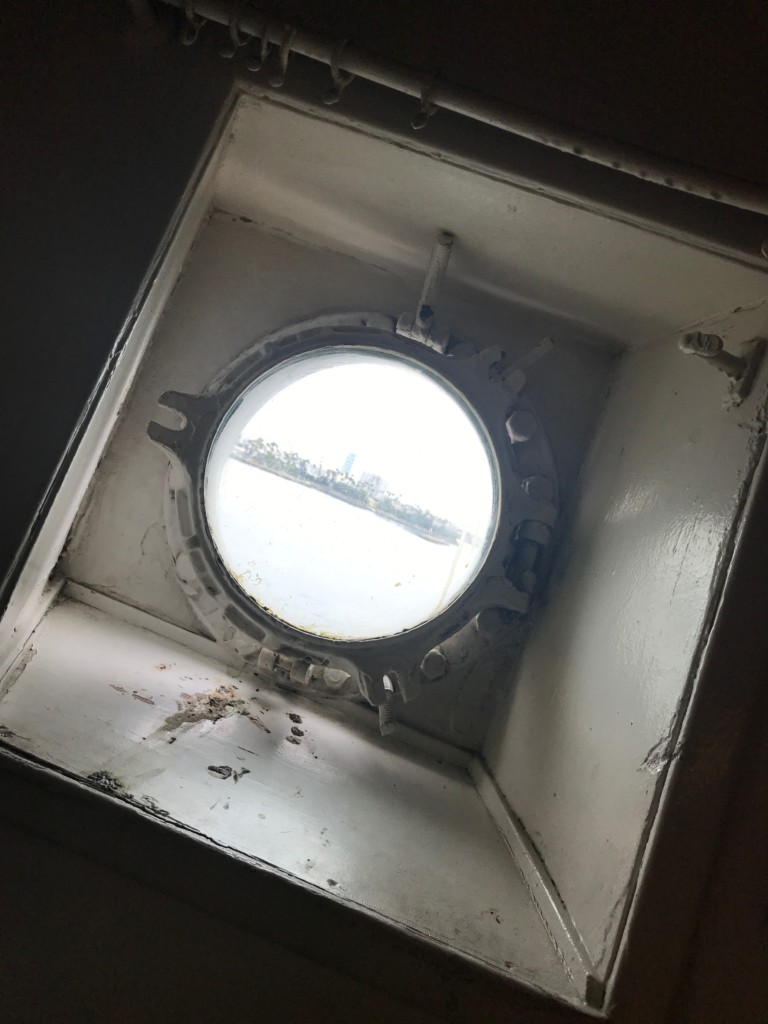
If you haven’t seen part one of the tour where I take you through my stateroom on the Queen Mary, click here, and be sure to stay tuned for the next installment.
In the meantime, if you want to take a walk around this area, check out this video before you leave.
